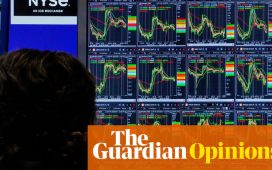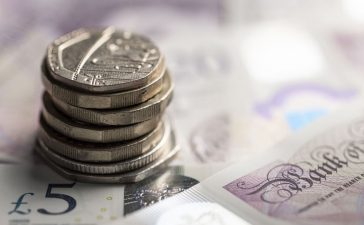For the last three years, the US and Europe have struggled with a specter unseen for a generation – inflation. Now it looks like the phantom may finally be fading.
This week the US Federal Reserve, European Central Bank and the Bank of England all held interest rates steady and cautiously signaled that the fight to tamp down soaring prices may be coming to an end.
“We’re seeing inflation making real progress. These are the things we have been wanting to see,” the Fed chair, Jerome Powell, said on Wednesday after announcing the central bank would once again pause rate rises.
The Fed went as far as to signal that it was considering three cuts in 2024 to its benchmark interest rates – which have shot up from near zero in 2020 to a 22-year high of 5.25% to 5.5% as Powell has fought to bring inflation under control.
Having initially dismissed the rising prices as a “transitory” phase triggered by the supply chain disruptions of the coronavirus pandemic, Powell has remained cautious even as inflation has steadily fallen. “We can’t know. We still have a ways to go. No one is declaring victory. That would be premature,” he said on Wednesday.
Investors were less circumspect. After the news the Dow Jones hit a new record high, closing above 37,000 for the first time.
In Europe, there was also – qualified – good news about inflation as the European Central Bank (ECB) announced it would hold rates steady. The ECB cut its inflation predictions for 2024 and removed the phrase “inflation is expected to remain too high for too long” used in previous statements.
While the Eurozone’s inflation rate has now fallen from over 9% to close to the ECB’s target of 2%, the ECB president, Christine Lagarde, said the central bank had not even discussed rate cuts for next year. “Should we lower our guard? We asked ourselves that. No – we should absolutely not lower our guard,” she said.
But the rate pause – the second in a row – suggests Lagarde is hopeful that the worst is over.
In the UK – where inflation has fallen from over 10% to 4.6% – the economic picture looks bleaker. The Bank of England warned there was still a long way to go compared with the US and EU. “Relative to developments in the United States and the euro area, measures of wage inflation were considerably higher in the United Kingdom and services price inflation had fallen back by far less,” the bank said in a statement.
For all the caveats it does appear that central bankers are hopeful that the worst of the inflation cycle is behind us. And in the US at least the economy has proven to be remarkably resilient despite the generational shock to its system delivered by Covid-19.
US inflation topped 9% in 2022 and has since fallen to 3.1%. Hiring has remained robust since the mass layoffs of the pandemic. Shoppers have continued to shop. Retail sales in November were far higher than economists had expected and gloomy predictions that consumers would stop shopping have so far proven wrong.
Powell has frequently mentioned that he hopes the US can achieve a “soft landing” – where the rate rises cool the economy and bring down prices without triggering a recession. So far it appears the Fed is on course to do just that.
If he succeeds it may go some way to solving another US economic conundrum: if the economy is OK why doesn’t anyone believe it? Poll after poll shows Americans believe the economy is a mess.
Those beliefs are a major stumbling block for Joe Biden who has put “Bidenomics” – his economic record – on the ballot. Inflation has consistently sunk the political fortunes of politicians. “Inflation is as violent as a mugger, as frightening as an armed robber and as deadly as a hitman,” as Ronald Reagan noted, a president elected during another period of frightening price rises. If this deeply unstabilizing phenomenon is finally under control, maybe Biden won’t get mugged.









